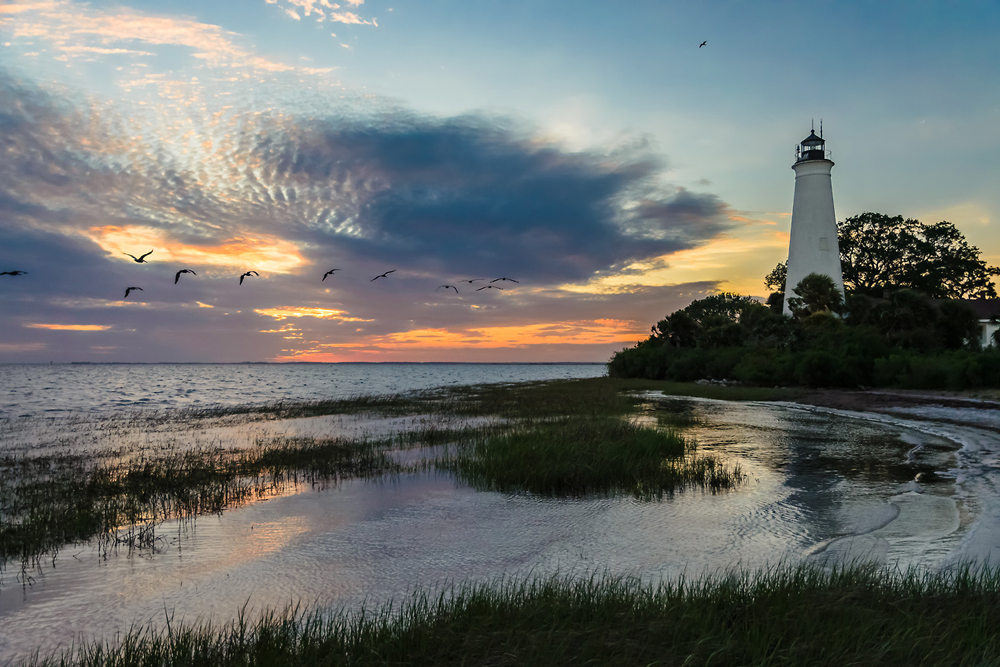Ahoy! St. Marks Lighthouse Beckons Migrating Birds


Just a short drive south of Tallahassee, Fla., St. Marks National Wildlife Refuge is a favorite winter stopover for migrating birds.
Established in 1931, St. Marks is one of the oldest refuges in the country. Spread across 68,000 acres are coastal marshes, islands, tidal creeks and estuaries of seven north Florida rivers that beckon migrating birds. Waterfowl are most easily seen on the refuge from mid-November through late December. Shore birds are most common during late spring and early fall. Songbirds arrive from their wintering areas in early spring and liven the refuge with their brilliant colors and songs.
The refuge is home to impressive wildlife of its own, including endangered species such as bald eagles, red-cockaded woodpeckers and green, loggerhead and leatherback sea turtles.
St. Marks is a gateway to the Panhandle section of the Great Florida Birding Trail, a 2,000-mile-long (3,200 kilometer) string of more than 400 protected bird habitats. Some 480 species of birds can be seen on the birding trail.
The St. Marks Lighthouse is a 73-foot-tall (22 meter) beacon for people as well as birds. The lighthouse was built in 1832 and is Florida's second-oldest lighthouse. It has survived relentless hurricanes and tropical storms and still operates today.
Follow OurAmazingPlanet @OAPlanet, Facebook& Google+.
Get the world’s most fascinating discoveries delivered straight to your inbox.


